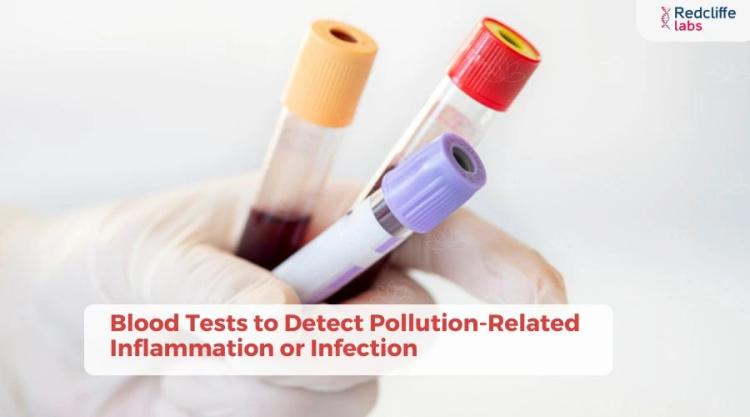Interpreting the RBS Normal Range in a Healthy and Diabetic Person

Medically Reviewed By
Dr. Geetanjali Gupta
Written By Muskan Taneja
on Jan 20, 2025
Last Edit Made By Muskan Taneja
on Jul 19, 2025

Blood sugar (RBS) is the body's main energy source, derived from the foods and drinks it consumes. However, various factors, including medications, can cause the level to be low or high. Therefore, it is important to understand the normal range of RBS.
Random blood sugar (RBS) is the amount of glucose in your blood at any time of day. Understanding your random blood sugar levels is vital for maintaining overall health and preventing the risk of diabetes.
This comprehensive blog will provide insightful information about the normal range of RBS, the glucose fasting test, health complications, and side effects.
What is the RBS or Random Blood Sugar Test?
Random blood sugar levels help maintain overall health and prevent health complications. A healthcare provider may recommend an RBS test to measure the amount of glucose in your blood at any time of day. The RBS test is also known as the glucose fasting test. It helps diagnose diabetes, monitor the progression of diabetes management, take precautions, and understand the effects of lifestyle and medication on blood sugar levels.
If your healthcare provider suspects you have type 1 or type 2 diabetes, they may recommend the RBS test. Redcliffe Labs offers over 3,600 tests, including the RBS test, at a reasonable price and provides a home sample collection service, making diagnostics accessible and affordable for everyone.
Symptoms Indicating the Need for the RBS Test
The following symptoms indicate you must take the RBS test:
-
Confusion
-
Blurred vision
-
Unexplained weight gain
-
Unconsciousness or ‘coma’
-
Seizures
-
Fainting
-
Memory loss
-
Frequent urination
Understanding The RBS Test Result
The FBS test result can be in the normal, low, and high range. It indicates whether you are at risk of prediabetes or diabetes. A higher blood sugar RBS is normal, and diabetes may not cause symptoms in the early stages.
11 Factors that can Affect Your RBS Normal Range
-
Not physically active
-
A history of heart disease
-
A 140/90 mm/Hg or higher blood pressure indicates unhealthy cholesterol levels.
-
A family history of diabetes
-
Side effects of medication
-
Menstruation
-
Dehydration
-
Illness
-
Eating too much food
-
Stress
RBS Normal Range
The FBS RBS normal range is 70 to 99 mg/dL (3.9 and 5.5 mmol/L). However, the normal range may vary depending on the laboratory, equipment, and measuring techniques.
-
A higher than RBS normal range or 100 to 125 mg/dL (5.9 to 6.9 mmol/L) means you have prediabetes. Prediabetes may later develop into type 2 diabetes.
-
126 mg/dL (7 mmol/L) or higher is usually dangerous and indicates the need for immediate medical consultation.
-
A 250 mg/dL or higher blood sugar level seems dangerous and requires immediate medical attention.
-
A blood sugar level of 300 mg/dL or higher is very dangerous and can lead to serious complications.
-
A blood sugar level of 600 mg/dL or higher shows life-threatening signs and is called hyperglycemic hyperosmolar nonketotic syndrome (HHNS)
Here is a table-wise normal blood sugar levels chart for a healthy person.
|
S. No. |
Blood Glucose Level (mg/dL) |
Condition |
|
|
< 100 mg/dL |
Fasting glucose levels |
|
|
90-130 mg/dL |
Levels 1 hour after meals |
|
|
90-110 mg/dL |
Levels 2 hours after meals |
|
|
70-90 mg/dL |
Levels 5 hours after meals |
Here is a table-wise normal blood sugar levels chart for a person with diabetes.
|
S. No. |
Age |
Normal Blood Sugar Levels (mg/dL) | |||
|
Fasting |
Before Meal |
1-2 hours after eating |
Bedtime | ||
|
|
People with diabetes < 6 years |
80-180 mg/dL |
100-180 mg/dL |
- 180 mg/dL |
110-200 mg/dL |
|
|
Diabetics 6-12 years |
80-180 mg/dL |
90-180 mg/dL |
Up to 140 mg/dL |
100-180 mg/dL |
|
|
Diabetics 13-19 years |
70-150 mg/dL |
90-130 mg/dL |
Up to 140 mg/dL |
90-150 mg/dL |
|
|
People with diabetes> 20 years |
< 100 mg/dL |
70-130 mg/dL |
< 180 mg/dL |
100-140 mg/dL |
5 Causes for Higher than RBS Normal Range
-
Overactive thyroid gland
-
Stress because of heart attack, surgery, trauma, or stroke
-
Pancreatic cancer
-
Pancreatitis (swelling and inflammation of the pancreas)
-
Rare tumors like acromegaly, Cushing syndrome, glucagonoma, and pheochromocytoma.
10 Causes for Lower than RBS Normal Range
-
Underactive thyroid
-
Insulinoma or tumor in the pancreas
-
Loss of appetite
-
Certain medications cause too much insulin
-
Liver disease
-
Kidney disease
-
Sudden weight loss
-
Weight loss after weight loss surgery
-
Vigorous exercise
-
Hypopituitarism (a pituitary gland disorder)
The blood sugar levels differ in a healthy and diabetic person. The RBS normal range after food differs in a healthy, prediabetic, and diabetic person.
Who Should Take the RBS Test?
Along with all the symptoms, health experts recommend some people be screened for diabetes and take the RBS test.
-
Any person with a body mass index higher than 23
-
A person with certain risk factors like high blood pressure, a sedentary lifestyle, PCOS, heart disease, and non-typical cholesterol levels.
-
A person who has been diagnosed with prediabetes
-
A pregnant woman who has gestational diabetes.
-
A woman older than 35 years.
-
A person who has HIV.
Preparation for the RBS Test
The RBS test does not require specific preparation. However, a healthcare professional may recommend fasting after assessing your current health.
The Procedure of the RBS Test
The RBS test requires a blood sample for analysis. The procedure is simple; you can book it from Redcliffe Labs to make it seamless. A phlebotomist will visit your home to collect the sample.
-
Clean the site with an alcoholic substance to prevent infection.
-
Insert a sterile syringe in the vein to collect blood samples.
-
Collect and transfer the sample into a test tube.
-
Label it with your details: name, place, time, and collection date.
-
Transfer the sample to the lab for analysis.
-
You will receive the reports through a message within 10 hours.
-
The analysis shows the weather RBS is in the normal range.
-
The normal range of blood sugar RBS indicates your blood glucose levels and screens for diabetes.
Risks Associated with the RBS Test
The random blood sugar (RBS) test helps screen someone for prediabetes or diabetes. If the test result indicates an RBS within the normal range, there is no risk of diabetes. This blood test requires inserting a sterile syringe for sample collection.
It may cause lightheadedness, hematoma, dizziness, bruises, and slight pain. These signs disappear within a couple of minutes. However, if the signs persist, seek immediate medical consultation.
The Bottom Line
A normal range of RBS helps determine the risk of medical conditions like prediabetes or diabetes. If you experience symptoms or have a family history of diabetes, you should take the RBS test to measure and check for normal range. This can help in precautionary measures, management, treatment, and avoiding the major risk of certain medical complications (diabetes). To check the normal range of RBS, book the Glucose Random test from Redcliffe Labs today.
FAQs
Ques1 What is a normal random blood sugar levels in adults?
Ans1 The normal random blood sugar levels in an adult are typically between 70 and 140 milligrams per deciliter (mg/dL). However, over-exercise, medications, stress, and certain foods may affect your blood sugar level.
Ques2 What is the RBS normal range?
Ams2 A normal random blood sugar level is usually between 125 mg/dL or less. Take the FBS test to determine your RBS level and check for prediabetes and diabetes.
Ques3 What level of blood sugar is dangerous?
Ans3 A blood sugar level above 250 milligrams per deciliter (mg/dL) is dangerous and may require immediate medical attention.



